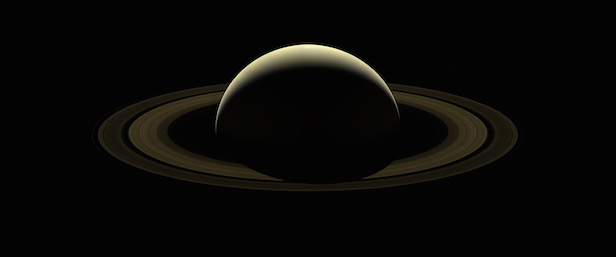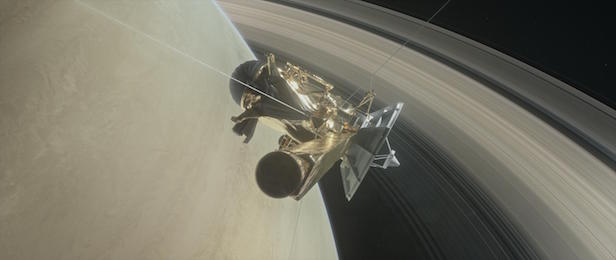Cassini’s final farewell to Saturn
Members of the imaging team behind the spacecraft have created this magnificent mosaic image of Saturn, taken just days before the mission’s end

This was the final image taken by Cassini after more than 13 years of exploring the depths of its complexity. Image credit: NASA/JPL-Caltech/Space Science Institute
Before the Cassini spacecraft went down in the blaze of glory in Saturn’s atmosphere, it took a series of pictures that unite into a fitting farewell mosaic image of the ringed planet. After spending 13 years at the gaseous giant, NASA’s hugely successful spacecraft used it’s wide-angle camera to mark its conclusion.
On 13 September 2017, 42 images were taken using Cassini’s wide-angle camera, which combined red, green and blue images covering Saturn’s full framework. When scientists pieced together all the images, it produced a spectacular natural colour mosaic masterpiece, included in the image is Saturn’s illustrious rings along with its moons Prometheus, Pandora, Janus, Epimetheus, Mimas and Enceladus.
There were many discoveries that came from Cassini’s exploration of Saturn and its equally elusive moons. “Cassini’s scientific bounty has been truly spectacular — a vast array of new results leading to new insights and surprises, from the tiniest of ring particles to the opening of new landscapes on Titan and Enceladus, to the deep interior of Saturn itself,” says Robert West, Cassini’s deputy imaging team leader at NASA’s Jet Propulsion Laboratory (JPL) in Pasadena, California.

The Cassini-Huygens spacecraft was launched on 15 October 1997. Image credit: NASA/JPL-Caltech
“It was all too easy to get used to receiving new images from the Saturn system on a daily basis, seeing new sights, watching things change,” says Elizabeth Turtle, an imaging team associate at the Johns Hopkins University Applied Physics Laboratory, Laurel, Maryland. “It was hard to say goodbye, but how lucky we were to be able to see it all through Cassini’s eyes!”
For other scientists in the Cassini team, this goodbye was reminiscent of another goodbye from decades ago.
“For 37 years, Voyager 1’s last view of Saturn has been, for me, one of the most evocative images ever taken in the exploration of the solar system,” says Carolyn Porco, former Voyager imaging team member and Cassini’s imaging team leader at the Space Science Institute in Boulder, Colorado. “In a similar vein, this ‘Farewell to Saturn’ will forevermore serve as a reminder of the dramatic conclusion to that wondrous time humankind spent in intimate study of our Sun’s most iconic planetary system.”
The Cassini spacecraft was launched in 1997 along with the European Space Agency’s Huygens probe, which went on to probe the surface the Saturn’s moon Titan. The surface of Titan showed to have oceans of hydrocarbons, such as ethane and methane, which was a tantalising discovery for astronomers and astrobiologists. Cassini’s analysis of another moon, Enceladus, presented unusual geyser-like streams of icy material, later confirming the existence of a subsurface ocean; presenting another place to look for in the search for microbial life.
Keep up to date with the latest reviews in All About Space – available every month for just £4.99. Alternatively you can subscribe here for a fraction of the price!




